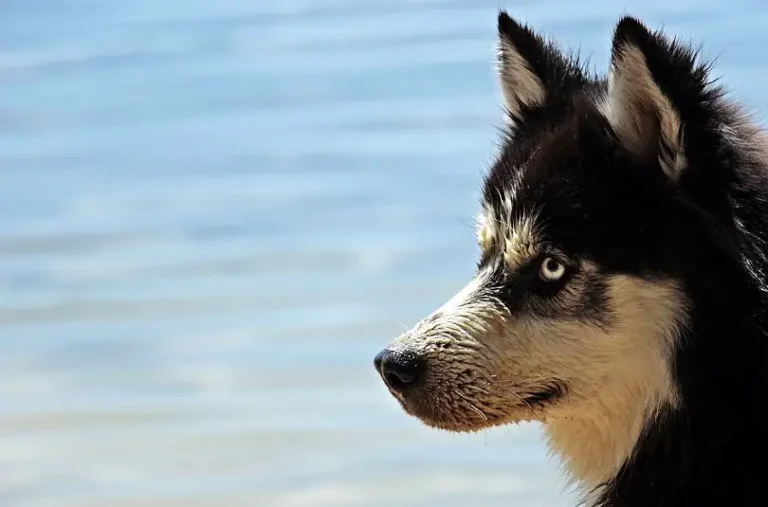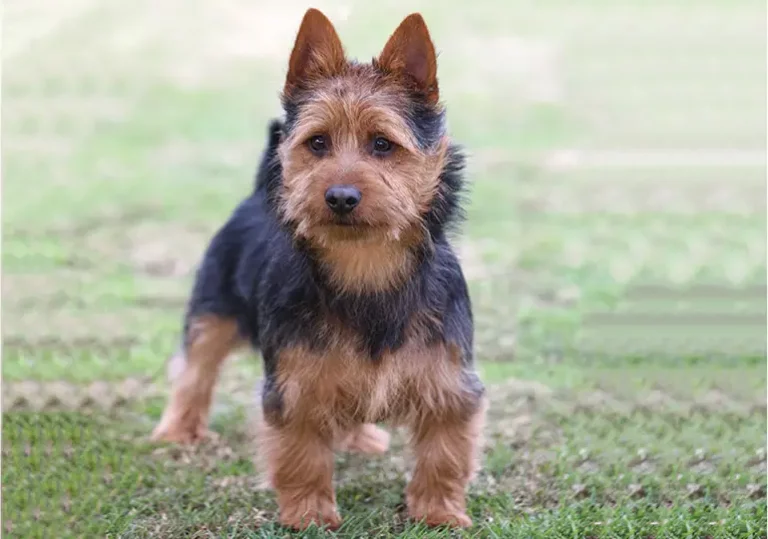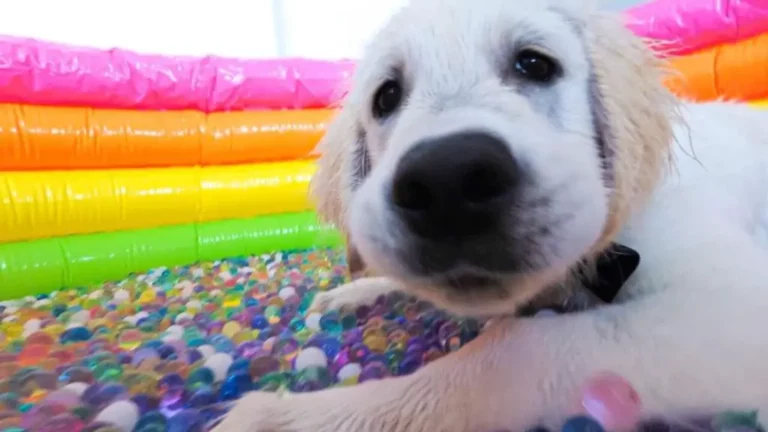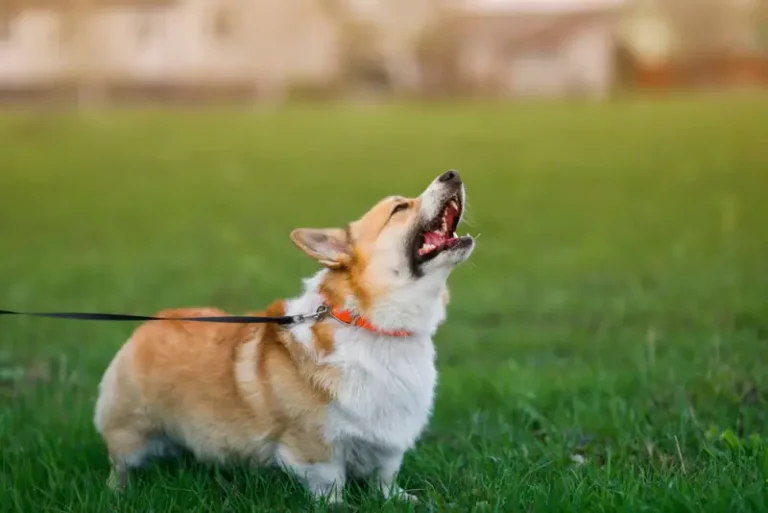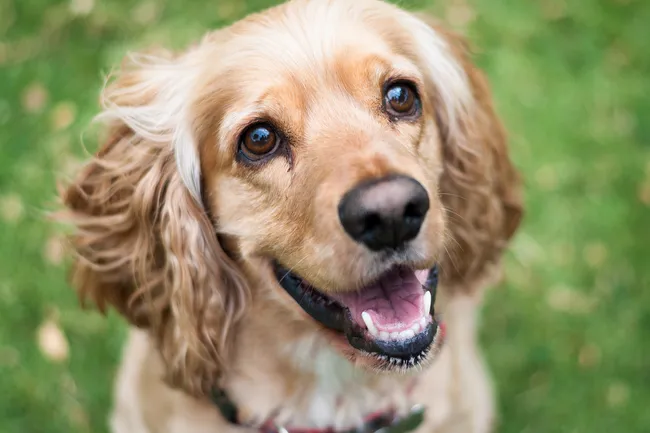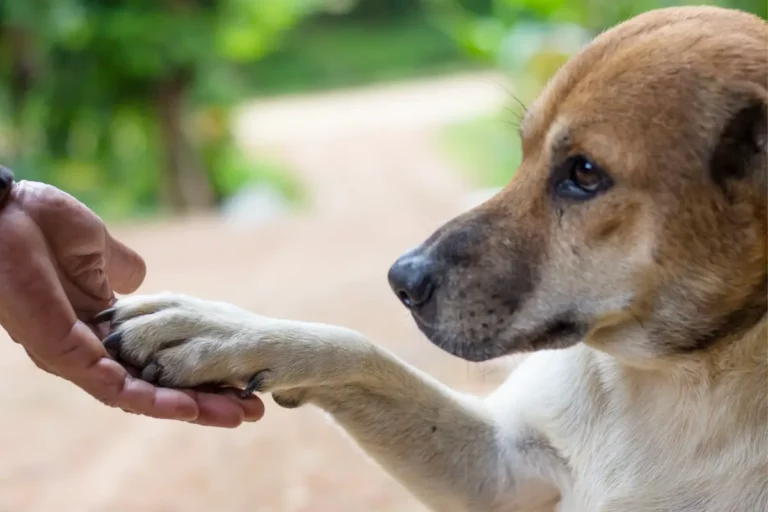Do Cocker Spaniels Shed? What You Need to Know
Welcoming a Cocker Spaniel into your family can be a delightful experience. These cheerful, gentle, and intelligent dogs are popular choices among pet owners for their friendly and endearing personalities. However, potential Cocker Spaniel owners often ask one crucial question: Do Cocker Spaniels Shed?
This blog post aims to provide an in-depth exploration of Cocker Spaniel shedding and offer valuable insights to help you manage it. Get ready to learn all about your Cocker Spaniel’s coat, how much shedding to expect, how to manage it, and much more.
Let’s delve into the world of Cocker Spaniel shedding.
Key Takeaways:
Before diving into the nitty-gritty details, here’s a quick glimpse into the key takeaways:
- Cocker Spaniels do shed, but the amount can vary based on factors like health, diet, and grooming practices.
- They have a double-layered coat which requires regular grooming to manage shedding and prevent matting.
- Proper nutrition and hydration can help maintain the health of their coat and minimize excessive shedding.
- Cocker Spaniels may not be suitable for individuals with severe pet allergies due to their shedding.
- While they do shed, Cocker Spaniels make wonderful pets due to their friendly, intelligent, and loyal nature.
Short answer: As for the short answer to our main question, ‘Do Cocker Spaniels Shed?’, yes, they do. But, shedding in Cocker Spaniels can be effectively managed with a regular grooming routine and a balanced diet. So, while you will need to be prepared for some level of shedding, it should not be a deal-breaker if you’re considering bringing a Cocker Spaniel into your family.
The Cocker Spaniel Breed: An Overview
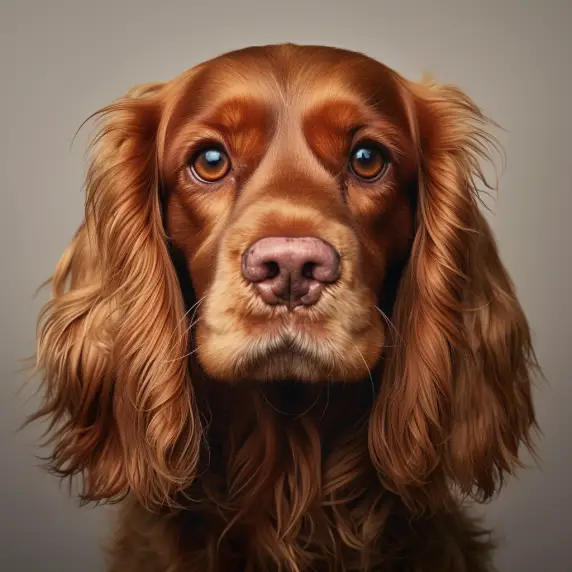
Before we discuss shedding, let’s first get acquainted with the breed itself. The Cocker Spaniel is one of the most popular dog breeds in the world. Originating from Spain, these dogs were bred as gun dogs, to fetch waterfowl for hunters.
They have since become cherished companions due to their amiable personality, beautiful appearance, and compact size.
Cocker Spaniels are characterized by their medium-sized body, and luxuriant, silky coat that comes in a variety of colors. With expressive eyes and a cheerful disposition, they are often considered the ‘merry’ members of the Spaniel family.
They are particularly known for their sporting abilities, keen intelligence, and adaptability.
Notably, Cocker Spaniels are part of the larger Spaniel family, which also includes the Springer Spaniel. However, Cocker Spaniels are smaller, and their coats are often more abundant and wavier, compared to their Springer counterparts.
This breed is known to be affectionate, playful, and sociable, making them great family pets.
Cocker Spaniels are recognized in two types: the American Cocker Spaniel and the English Cocker Spaniel. The American Cocker Spaniel is smaller with a domed head and shorter muzzle, while the English variety is slightly larger with a more square muzzle.
Both types have their unique charm, but it’s important to note that their grooming and shedding levels may slightly vary.
In the next sections, we’ll dive into the specifics of how much Cocker Spaniels shed and how to effectively manage it.
Shedding in Cocker Spaniels: A Detailed Analysis
To understand shedding in Cocker Spaniels, we must first discuss what it means for a dog to shed. Shedding is the process by which dogs naturally lose old or damaged hair. The frequency and amount of hair that is shed often depend on the breed of the dog and their overall health.
Cocker Spaniels are known for their beautiful, dense coats. These double coats consist of a soft, short undercoat that provides insulation and a longer, silky topcoat that serves as a protective layer against environmental elements.
The amount of shedding is moderate in comparison to some other breeds. However, their shed hair often gets caught in the surrounding coat, creating mats and tangles if not regularly groomed.
Shedding in Cocker Spaniels can vary based on several factors:
- Season: Like many breeds, Cocker Spaniels have a shedding season, usually in the spring and fall. During these times, they lose more hair than usual as they prepare for the changing weather.
- Age: Young puppies tend to shed their puppy coats as they grow, leading to an increase in shedding around the 4-6 month age range. As the dogs get older and their new adult coats grow in, the shedding usually reduces to a moderate level.
- Health: If a Cocker Spaniel is experiencing health issues, such as allergies, skin conditions, or nutritional deficiencies, they may shed more than normal.
- Breed Type: English Cocker Spaniels tend to have thicker coats than American Cocker Spaniels, which may result in slightly more shedding.
In the following sections, we will explore how to manage this shedding and keep your Cocker Spaniel looking their best.
Do Mini Cocker Spaniels Shed?
Mini Cocker Spaniels, also known as Teacup Cocker Spaniels, are not a breed recognized by major kennel clubs. They are smaller versions of the standard Cocker Spaniel, typically bred down in size for their petite stature.
Despite their smaller size, Mini Cocker Spaniels inherit most traits from their standard-sized counterparts, including the trait of shedding.
Just like standard Cocker Spaniels, Mini Cocker Spaniels have a dense double coat that goes through periods of increased shedding, particularly during the spring and fall seasons. Therefore, you should expect a moderate level of shedding from Mini Cocker Spaniels.
It’s worth noting that their smaller size does not equate to less grooming. Mini Cocker Spaniels require just as much attention to their coats as the standard breed. Regular grooming, including brushing and bathing, can help manage shedding and keep their coats healthy and beautiful.
Keep in mind that the size of the dog can influence their overall health, with smaller dogs often facing a unique set of health challenges that can sometimes affect their coat condition and shedding patterns. It is essential to maintain regular vet check-ups and a balanced diet for the health of your Mini Cocker Spaniel.
Are Cocker Spaniels Hypoallergenic?
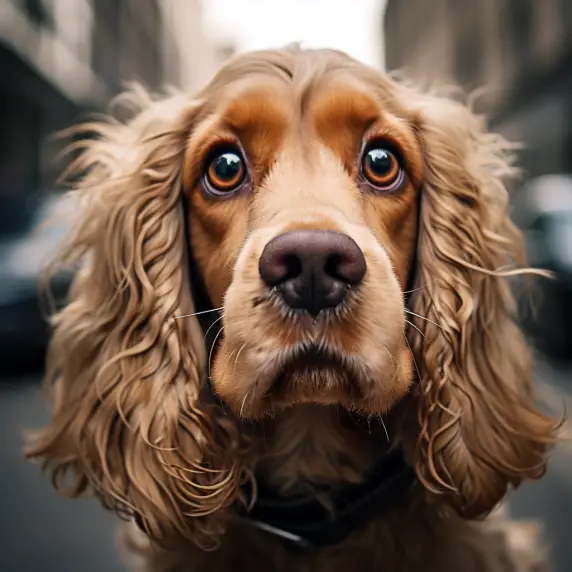
In the world of dogs and allergies, the term hypoallergenic often leads to a lot of confusion. It’s important to clarify that no dog breed is 100% hypoallergenic.
The term hypoallergenic refers to breeds that are generally less likely to cause an allergic reaction in sensitive individuals, but individual reactions can still vary significantly.
Cocker Spaniels, unfortunately, do not fall into the hypoallergenic category. Their double coat sheds regularly, releasing pet dander into the environment. Pet dander, the microscopic skin flakes shed by all animals with fur or feathers, is often the primary cause of pet-related allergies.
This doesn’t mean that people with allergies cannot live with Cocker Spaniels. The allergic reaction severity varies from person to person, and some may find living with a Cocker Spaniel doesn’t trigger their allergies excessively.
For those with mild allergies, regular grooming and cleaning practices, such as vacuuming and using air purifiers, can help manage the amount of dander in the environment and reduce allergic reactions.
But, if you or a family member has severe pet allergies, it might be a good idea to consider dog breeds known for being more hypoallergenic, such as Poodles, Bichon Frises, or certain terrier breeds.
Understanding Dog Shedding: An Overview
Before we delve deeper into Cocker Spaniel’s shedding habits, it’s beneficial to understand the phenomenon of dog shedding as a whole.
All dogs shed to some extent. It’s a natural process where dogs lose old or damaged hair. The frequency and amount of shedding depend on various factors, including the dog’s breed, health, and season.
Shedding occurs to help the animal maintain a healthy coat and regulate body temperature. The hair growth cycle in dogs involves growth, rest, and shedding phases.
Dogs can have single or double coats. Single-coated breeds have a top coat of guard hairs without a second undercoat, and they usually shed less. Double-coated breeds, like the Cocker Spaniel, have an undercoat beneath the top layer of guard hairs, which provides additional insulation.
These breeds typically shed more, especially during seasonal changes when they “blow” or shed their undercoats.
It’s also crucial to note that shedding can be affected by the dog’s overall health. Nutritional deficiencies, stress, certain illnesses, or skin irritation can cause excessive shedding. Therefore, if you notice a sudden change in your dog’s shedding pattern, it may be wise to seek veterinary advice.
Understanding these basic principles can provide a clearer picture of why Cocker Spaniels, as double-coated dogs, tend to shed and what factors might influence their shedding habits.
Factors Influencing Cocker Spaniel Shedding
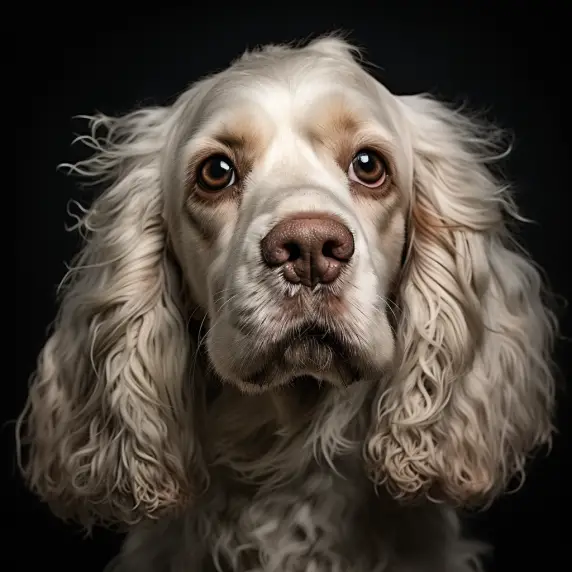
When it comes to Cocker Spaniel shedding, there are several factors at play. Understanding these elements can help you manage your dog’s shedding effectively.
1. Breed Genetics
The Cocker Spaniel, as a double-coated breed, is genetically predisposed to shed. The undercoat sheds regularly and more intensively during seasonal changes.
2. Season
Like many double-coated breeds, Cocker Spaniels go through a process called “blowing coat” during the transitions between seasons, particularly from winter to spring and summer to fall. During these periods, they shed their undercoats significantly, which can result in a noticeable increase in shedding.
3. Age
Puppies will shed their soft puppy coat as they mature, and this may result in a period of increased shedding. As Cocker Spaniels grow older, their coats might also go through changes, leading to possible variations in shedding.
4. Health Status
A Cocker Spaniel’s health can greatly influence its shedding patterns. Conditions like allergies, skin infections, hormonal imbalances, or other underlying health issues may cause increased shedding.
5. Diet
Diet plays a significant role in a dog’s skin and coat health. A balanced diet rich in omega fatty acids can support a healthy coat and potentially reduce excessive shedding.
Remember, regular grooming is also an essential part of managing your Cocker Spaniel’s shedding. Regular brushing helps to remove loose hairs and can keep your dog’s coat looking its best.
If you are concerned about your Cocker Spaniel’s shedding, it’s always a good idea to consult with your vet to rule out any potential health issues.
Dealing with Cocker Spaniel Shedding: Practical Tips
Tackling Cocker Spaniel shedding doesn’t have to be a challenge. With a few practical tips, you can manage the shedding and maintain a clean, fur-free environment. Here’s how:
1. Regular Brushing
Brushing your Cocker Spaniel several times a week can significantly reduce shedding. It helps remove dead hair before it falls off and keeps the skin healthy by distributing natural oils.
2. Balanced Diet
Feeding your Cocker Spaniel a balanced diet rich in high-quality proteins and omega fatty acids can promote a healthier coat and reduce excessive shedding. Always choose a dog food that is appropriate for their age, size, and health status.
3. Regular Baths
Regular baths with dog-specific shampoos can help manage shedding. Always ensure to use products that won’t irritate their skin or strip natural oils.
4. Keeping Them Hydrated
Dehydration can lead to dry, itchy skin that may increase shedding. Ensure your Cocker Spaniel always has access to fresh, clean water.
5. Regular Vet Check-ups
Routine veterinary check-ups can catch any potential health issues that could lead to increased shedding. If you notice sudden or excessive shedding, seek professional help.
6. Use the Right Tools
Invest in a quality de-shedding tool. These tools are designed to reach the undercoat and remove loose hairs effectively.
Remember, shedding is a natural part of a Cocker Spaniel’s life, but with proper care and maintenance, you can keep it under control and enjoy a happy, healthy life with your furry friend.
Do Cocker Spaniels Need Haircuts?
The short answer is yes, Cocker Spaniels do need haircuts. Their unique coat is a distinctive feature, but it also requires a bit more maintenance than other dog breeds.
Cocker Spaniels have a double coat – a soft undercoat for insulation and a longer, silky overcoat. This dense coat can become knotted or matted if not properly cared for, which can lead to discomfort and skin infections.
Regular haircuts help to keep their coats manageable, neat, and healthy. However, the frequency and style of the haircut can vary based on your Spaniel’s lifestyle, your personal preference, and the climate where you live.
Typically, a Cocker Spaniel should be groomed every 6-8 weeks. Grooming not only includes a haircut but also nail trimming, ear cleaning, and other hygiene practices.
When it comes to styles, there are several options available. Some owners prefer the “puppy cut,” which involves trimming the hair to one length all over the body for a low-maintenance style. Others prefer the traditional “show cut” that leaves longer hair on the body and legs.
Regardless of the style you choose, it’s important to keep their fur free of mats and tangles.
While grooming can be done at home, it might be beneficial to enlist the help of a professional groomer, especially if you’re new to grooming or your Spaniel’s coat has special needs. Professional groomers have the experience and tools necessary to give your Cocker Spaniel a proper cut without causing undue stress or injury.
Remember, regular haircuts are a crucial part of your Cocker Spaniel’s overall health and well-being, so never neglect this important task.
Health Issues Related to Cocker Spaniel Shedding
A certain degree of shedding is normal and healthy in Cocker Spaniels, as it is their body’s way of removing old, damaged, or extra hair. However, excessive shedding can sometimes indicate underlying health issues.
- Skin Conditions: Various skin conditions can cause excessive shedding in Cocker Spaniels. This includes allergies, bacterial or fungal infections, parasitic infestations (like fleas or mites), or dermatitis. Any unusual changes in your Cocker Spaniel’s skin, such as redness, itching, or sores, should be examined by a vet.
- Nutrition Deficiency: Poor diet or lack of certain nutrients can lead to hair loss in dogs. A balanced diet rich in essential fatty acids, proteins, and vitamins is necessary for a healthy coat. Sometimes, dietary supplements might be needed to address any deficiencies.
- Hormonal Imbalances: Conditions such as hypothyroidism or Cushing’s disease can cause changes in a dog’s coat, including excessive shedding. If your Spaniel is shedding more than usual, along with other symptoms like weight gain, lethargy, or behavioral changes, it’s advisable to consult a vet.
- Stress: Just like humans, dogs can also lose hair due to stress. Changes in the environment, a new family member, or separation anxiety are some factors that can cause stress in your Cocker Spaniel leading to increased shedding.
Remember, regular veterinary check-ups are vital to catch and treat any potential issues early. If you notice an unexpected increase in your Cocker Spaniel’s shedding or other concerning symptoms, don’t hesitate to consult your vet. The sooner any health issue is diagnosed, the better the chances are for a full recovery.
Additional Insights: Behavior and Characteristics of Cocker Spaniels
Understanding a Cocker Spaniel’s behavior and characteristics beyond their shedding habits can give you a holistic view of this breed. Here are some essential aspects you should be aware of:
- Do Cocker Spaniels Smell? Cocker Spaniels are known for their unique ‘doggy’ smell. This scent is more noticeable than in some other breeds due to their long ears that can trap moisture and lead to infections if not cleaned regularly. Routine grooming, ear checks, and bathing can help control any unpleasant odors.
- Do Cocker Spaniels Bark a Lot? While Cocker Spaniels are generally known to be amiable and quiet dogs, they can become more vocal if they’re bored or anxious. Early socialization and regular mental stimulation can help keep their barking tendencies in check.
- Do Cocker Spaniels Have Hair or Fur? Technically, Cocker Spaniels have hair, not fur. Their hair continuously grows and doesn’t shed as much as breeds with fur. However, this hair can still shed, especially if not regularly groomed.
- Do Cocker Spaniels Make Good Pets? Cocker Spaniels are beloved for their sociable, gentle, and affectionate nature. They’re excellent with children and other pets, making them a great fit for families. However, they do require a fair amount of grooming and exercise to keep them happy and healthy.
- Do Springer Spaniels Shed? Yes, Springer Spaniels, like their Cocker cousins, do shed. They have a double coat that sheds moderately year-round and more heavily during the shedding seasons of spring and fall.
By understanding these characteristics, you can better prepare for what it’s like to live with a Cocker Spaniel, shedding and all. Remember, every dog is an individual, and these characteristics can vary from one Cocker Spaniel to another.
Comparing Cocker Spaniels with Springer Spaniels
Cocker Spaniels and Springer Spaniels are two distinct breeds within the Spaniel family. While both breeds share common ancestors and have similar physical characteristics, there are some notable differences.
- Size: Springer Spaniels are generally larger than Cocker Spaniels. The average Cocker Spaniel weighs between 20 to 30 pounds and stands 13.5 to 15.5 inches tall at the shoulder. On the other hand, Springer Spaniels typically weigh between 40 to 50 pounds and stand 19 to 20 inches tall.
- Appearance: Both breeds have a similar coat texture—soft and either flat or slightly wavy. However, Springer Spaniels often have more feathering on their legs, ears, chest, and belly. Cocker Spaniels are well known for their “puppy-dog” eyes and longer, low-set ears.
- Shedding: As mentioned previously, both Cocker Spaniels and Springer Spaniels shed. However, Springer Spaniels typically shed more due to their double coat. Both breeds require regular grooming to keep shedding under control.
- Temperament: Both breeds are known for being friendly, sociable, and great family pets. However, Springer Spaniels are often considered more energetic and active than Cocker Spaniels, requiring more exercise and mental stimulation.
- Health: Both breeds can be prone to specific health problems. Springer Spaniels can be more prone to hip dysplasia, while Cocker Spaniels can have issues with their eyes and ears. Regular vet check-ups are essential for both breeds.
In summary, while Cocker Spaniels and Springer Spaniels share many similarities, there are distinct differences in their size, appearance, shedding level, temperament, and health concerns. These factors can help you decide which breed would fit better with your lifestyle and preferences.
FAQs: Cocker Spaniel Shedding
Here, we address the most commonly asked questions about Cocker Spaniels and their shedding habits:
Are Cocker Spaniels high maintenance?
Yes, due to their regular grooming needs and active nature, Cocker Spaniels are considered a high-maintenance breed. Regular grooming helps manage shedding and keeps their coat healthy. They also require plenty of physical and mental stimulation to keep them happy and well-behaved.
Are Cocker Spaniels hypoallergenic dogs?
No, Cocker Spaniels are not hypoallergenic. They have a double coat that sheds, which can trigger allergies in sensitive individuals.
Which Spaniels shed the least?
The amount of shedding varies among Spaniel breeds. However, Spaniels with hair instead of fur, like the American Water Spaniel, might shed less than others. It’s important to remember that all dogs shed to some degree, and regular grooming can help manage shedding.
What are the disadvantages of a Cocker Spaniel?
While Cocker Spaniels are generally known for their friendly and loving nature, they do come with some challenges. They require regular grooming due to their tendency to shed and have long fur that can easily mat. They are also known to be somewhat stubborn and can require patient, consistent training.
Finally, Cocker Spaniels are prone to several health issues, including ear infections, eye problems, and hip dysplasia.
Do mini Cocker Spaniels shed as much as the standard size?
Yes, mini Cocker Spaniels also shed, although the amount of hair they lose might be slightly less noticeable simply because they’re smaller in size. Regular grooming is still required to keep shedding under control.
Do Cocker Spaniels smell?
Cocker Spaniels can have a ‘doggy’ odor, especially if their regular grooming needs are not met. They are prone to ear infections, which can also contribute to a bad smell.
Do Cocker Spaniels bark a lot?
Cocker Spaniels can be quite vocal, and their level of barking will often depend on their individual personality and how they’ve been trained. Proper training from a young age can help manage excessive barking.
Do Cocker Spaniels have hair or fur?
Cocker Spaniels have fur, not hair. This means they have a double coat, with a softer undercoat for insulation and a harsher topcoat for protection, which results in regular shedding.
Do Cocker Spaniels make good pets?
Yes, Cocker Spaniels generally make excellent pets. They are friendly, sociable, and great with children and other pets. However, they do require regular grooming and plenty of exercise.
Final Thoughts
In the world of pet ownership, shedding is a reality to be reckoned with, especially for those who have Cocker Spaniels. These affectionate dogs do shed, but that shouldn’t deter you from considering them as a family pet.
Their loving nature, playful energy, and beautiful appearance more than makeup for a bit of fur around the house. Remember that grooming is not just a chore, but also a bonding experience and an opportunity to keep an eye on your pet’s health.
With regular care, a good diet, and an understanding of their shedding patterns, living with a Cocker Spaniel can be a truly rewarding experience.
Every pet has its unique needs and quirks. As a responsible pet owner, the onus is on you to understand these needs and respond to them to the best of your ability. Our pets, after all, give us their unconditional love, and they deserve the same in return.
Stay tuned to our blog for more insights into dog breeds, pet care, and everything else you need to know to keep your furry friends happy and healthy. Until next time, happy pet parenting!

